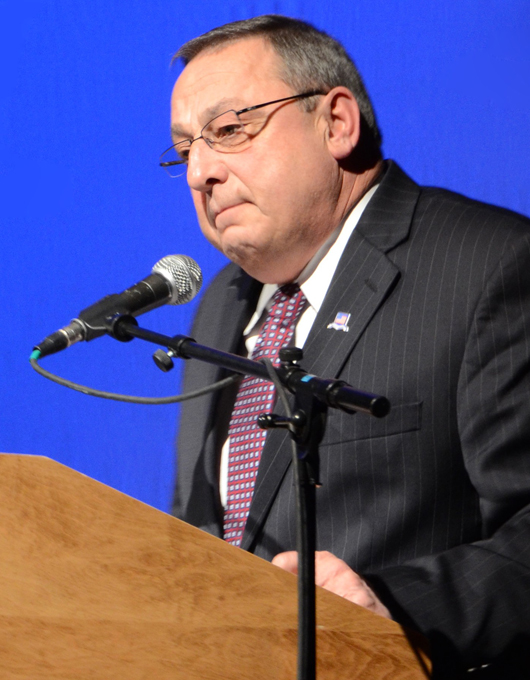
PORTLAND, Maine (AP) – Maine Gov. Paul LePage was within his rights when he ordered the removal of a mural depicting the history of the labor movement from a state office building, a federal judge ruled Friday, a year after the mural was put into storage at an undisclosed location.
Judge John Woodcock dismissed a lawsuit aimed at restoring the labor mural to its original location in on the ground floor of the Department of Labor building.
The governor’s decision created a national uproar that proved to be a major distraction, but LePage felt vindicated by the judge’s ruling.
“We’ve always believed this was a frivolous, politically motivated lawsuit,” said Adrienne Bennett, the governor’s spokeswoman. “It would be stunning if government officials were to be barred from making different artistic choices than their predecessors.”
One of the lawyers who challenged the governor’s decision suggested that both LePage and the judge were out of step.
“The public understands what the court apparently did not, which is that there cannot, nor should there be, censorship of art by the government,” said lawyer Jeff Young. “We believe strongly that although we have not prevailed today in the court of law, that we have prevailed perhaps more importantly in the court of public opinion.”
The lawsuit filed in U.S. District Court in Bangor contended the Republican governor violated the U.S. Constitution as well as the state’s contract with the artist.
But the judge agreed with the LePage administration’s claim that the governor is entitled to engage in “government speech,” a doctrine that says the government is free to express itself.
“Having concluded that the state of Maine engaged in government speech when it commissioned and displayed the labor mural, it follows that Governor LePage also engaged in government speech when he removed the mural. The governor’s message—whether verbal or in the form of the expressive act of removal—is government speech,” Woodcock wrote.
After taking office, LePage was alerted to the mural by a “secret admirer” who claimed it was an affront. LePage decided that it presented a one-sided view that bowed to organized labor.
Featuring World War II’s “Rosie the Riveter,” a 1937 shoe strike in Maine, and New Deal-era U.S. Labor Secretary Frances Perkins, the 36-foot mural commissioned by then-Democratic Gov. John Baldaci included 11 panels, each 7 feet tall. It was created by artist Judy Taylor, who won a competition commissioned by the Maine Arts Commission.
The mural was unveiled in August 2008.
The decision to remove it ignited a firestorm of criticism, in addition to the federal lawsuit filed on behalf of three artists, a workplace safety official, an organized labor representative and an attorney.
“We have a legal decision but nothing resembling justice,” said artist Robert Shetterly, one of the plaintiffs. “What’s been censored, what’s been removed and suppressed, is not just Judy Taylor’s free speech against the governor’s free speech or government speech—what’s been censored is our history.”
But Maine Attorney General William Schneider said the judge made the right decision, saying “one of the cornerstones of American democracy is free expression—by individuals and the government.”
“As citizens, we want our government officials to speak and express their views. Any effort by a small group to attempt to control government’s speech by bringing elected officials to trial should be viewed as a threat to our democratic principles,” Schneider said.
The judge’s decision left open the door for a separate lawsuit in state court, so the plaintiffs could file a federal appeal, pursue a lawsuit in state court, or do both, Young said.
As for mural, its location has been a mystery ever since its removal from public view. The LePage administration has declined to divulge the location.
___
Associated Press writer Clarke Canfield in Portland, Maine, contributed to this report.
___
Copyright 2012 Associated Press. All rights reserved. This material may not be published, broadcast, rewritten, or redistributed.
AP-WF-03-23-12 2011GMT
ADDITIONAL IMAGE OF NOTE


